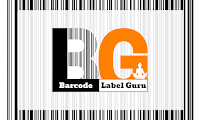What is pharma code one track?
Pharmacode One-Track: This is the basic and most widely used type of pharmacode. It consists of a single track of bars, where the width and position of each bar encode numeric data.
PHARMA-CODE - One-Track (also known as the standard PHARMA-CODE or Pharmaceutical Binary Code) is a one-dimensional (1D) symbology that was developed in the late 1970s and is used in the packaging of pharmaceutical products.
How many barcodes can Pharmacode one track encode?
With Pharmacode One Track barcode we can encode numbers in range from 3 to 131070. In the box below, enter the codes separated by a comma or any code on a new line. All numbers outside the allowed range will be ignored. The generator can create from 1 to 20 barcodes at once.
What is a one-track barcode?
PHARMA-CODE - One-Track, also known as the standard PHARMA-CODE, is a 1D symbology used in the packaging of pharmaceutical products. It is designed to be read by a barcode reader despite any printing errors that may occur. For this reason, additional color bars may be added to ensure the readability of the barcode.
What is a Pharmacode?
A pharmacode is a one-dimensional barcode that consists of a series of vertical bars with varying widths. It is a type of barcode symbology widely used in the pharmaceutical industry for packaging control, medication identification and tracking purposes. It is a specific implementation of barcode technology designed to encode numerical data.
What is a Pharma barcode?
Pharma Barcode: "Pharma Barcode" is a colloquial term used to refer to Pharmacode. It combines the words "pharma" (short for pharmaceutical) and "barcode" to describe the barcode symbology specifically used in the pharmaceutical context. What Determines the Value of Each Bar in Pharmacode?
PHARMA-CODE - One-Track (also known as the standard PHARMA-CODE or Pharmaceutical Binary Code) is a one-dimensional (1D) symbology that was developed in the late 1970s and is used in the packaging of pharmaceutical products. It is designed to be read (typically from right to left) by a barcode reader despite any printing errors that may otherwise occur on the label. For example, color bars can be added to the symbol to verify that those colors (such as a red warning message) are printed correctly on the label.
PHARMA-CODE is typically used for in-house inventory control and security verification, ensuring that packaging materials and contents match and are correct. It is not used for point-of-sale purchases. For applications that have limited space, a miniature version is available.
Symbol Structure
The symbol comprises the following elements:
Leading quiet zone
Optional start bar
A single integer that is encoded in binary format
Optional color bar, which is used to check for the presence of certain colors on the package
Optional end bar
Trailing quiet zone
Unlike other 1D symbologies, PHARMA-CODE encodes its data in binary format rather than decimal, using two widths of bars: narrow and wide. The integer that PHARMA-CODE encodes can be 3 at minimum (represented by two narrow bars) and 131,070 at maximum (represented by sixteen wide bars).
A quiet zone of 6 mm on either side of the symbol is required. No check digit is included.
Character Set
This symbology supports all numeric digits (0-9).
Color Bars
PHARMA-CODE allows for one or more optional color bars to be added to the barcode. These bars do not contain any data but are used to verify that the color is present on the label. Certain barcode scanners can be configured to identify a specific color and verify its presence. When the color is scanned, it is validated. If the color is not scanned, an error can be flagged.


